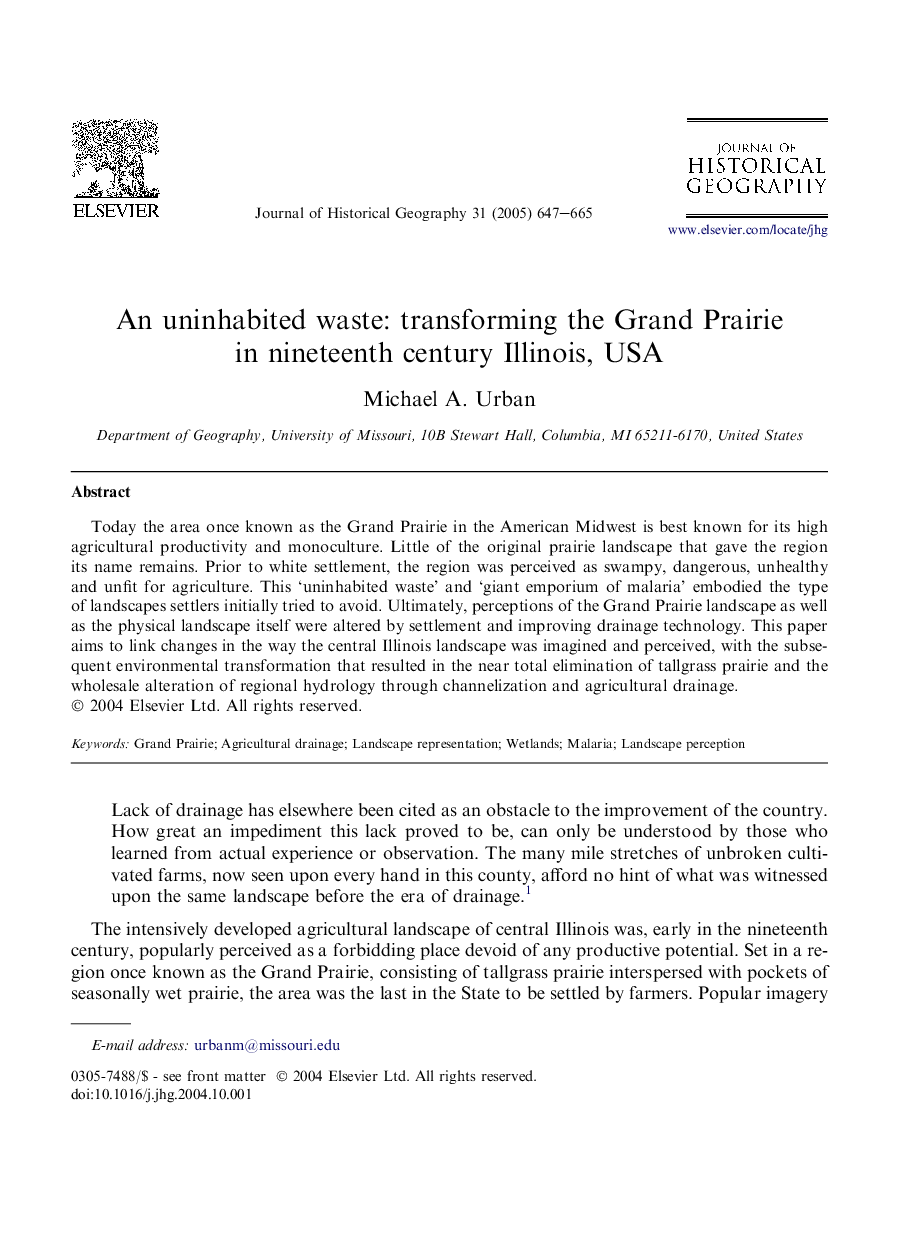| Article ID | Journal | Published Year | Pages | File Type |
|---|---|---|---|---|
| 10500383 | Journal of Historical Geography | 2005 | 19 Pages |
Abstract
Today the area once known as the Grand Prairie in the American Midwest is best known for its high agricultural productivity and monoculture. Little of the original prairie landscape that gave the region its name remains. Prior to white settlement, the region was perceived as swampy, dangerous, unhealthy and unfit for agriculture. This 'uninhabited waste' and 'giant emporium of malaria' embodied the type of landscapes settlers initially tried to avoid. Ultimately, perceptions of the Grand Prairie landscape as well as the physical landscape itself were altered by settlement and improving drainage technology. This paper aims to link changes in the way the central Illinois landscape was imagined and perceived, with the subsequent environmental transformation that resulted in the near total elimination of tallgrass prairie and the wholesale alteration of regional hydrology through channelization and agricultural drainage.
Related Topics
Social Sciences and Humanities
Arts and Humanities
History
Authors
Michael A. Urban,
